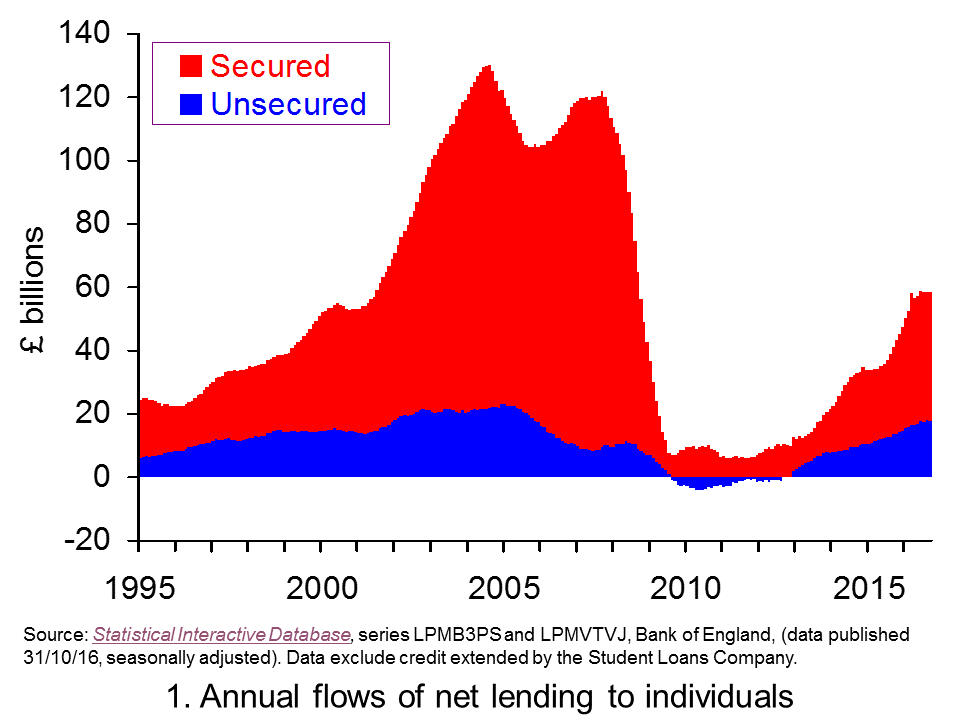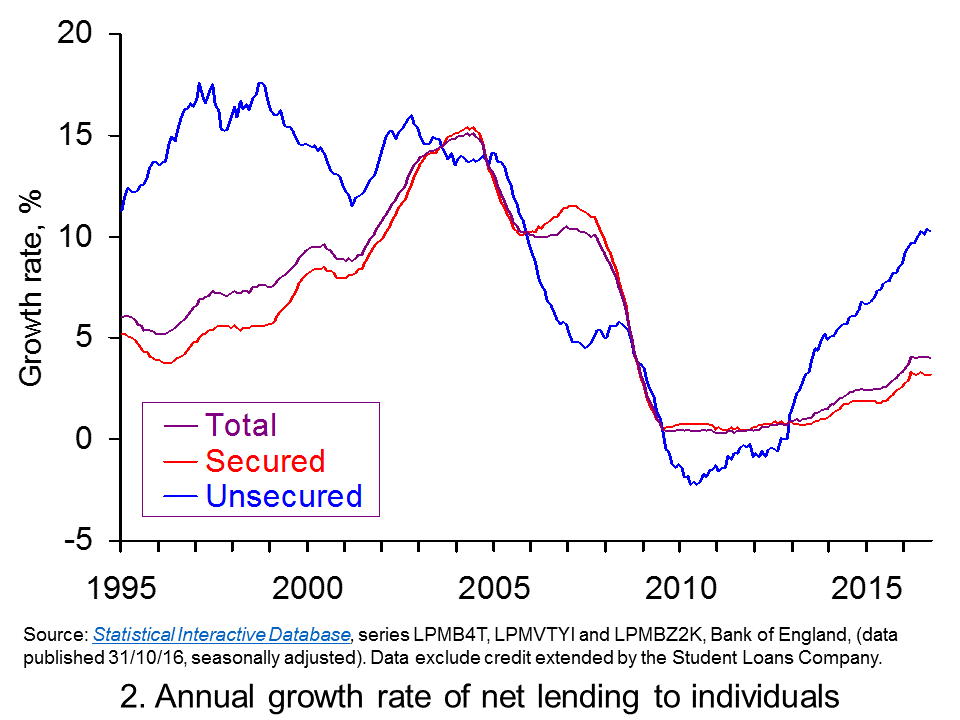 We’ve considered Keynesian economics and policy in several blogs. For example, a year ago in the post, What would Keynes say?, we looked at two articles arguing for Keynesian expansionary polices. More recently, in the blogs, End of the era of liquidity traps? and A risky dose of Keynesianism at the heart of Trumponomics, we looked at whether Donald Trump’s proposed policies are more Keynesian than his predecessor’s and at the opportunities and risks of such policies.
We’ve considered Keynesian economics and policy in several blogs. For example, a year ago in the post, What would Keynes say?, we looked at two articles arguing for Keynesian expansionary polices. More recently, in the blogs, End of the era of liquidity traps? and A risky dose of Keynesianism at the heart of Trumponomics, we looked at whether Donald Trump’s proposed policies are more Keynesian than his predecessor’s and at the opportunities and risks of such policies.
The article below, Larry Elliott updates the story by asking what Keynes would recommend today if he were alive. It also links to two other articles which add to the story.
Elliott asks his imaginary Keynes, for his analysis of the financial crisis of 2008 and of what has happened since. Keynes, he argues, would explain the crisis in terms of excessive borrowing, both private and public, and asset price bubbles. The bubbles then burst and people cut back on spending to claw down their debts.
 Keynes, says Elliott, would approve of the initial response to the crisis: expansionary monetary policy (both lower interest rates and then quantitative easing) backed up by expansionary fiscal policy in 2009. But expansionary fiscal policies were short lived. Instead, austerity fiscal policies were adopted in an attempt to reduce public-sector deficits and, ultimately, public-sector debt. This slowed down the recovery and meant that much of the monetary expansion went into inflating the prices of assets, such as housing and shares, rather than in financing higher investment.
Keynes, says Elliott, would approve of the initial response to the crisis: expansionary monetary policy (both lower interest rates and then quantitative easing) backed up by expansionary fiscal policy in 2009. But expansionary fiscal policies were short lived. Instead, austerity fiscal policies were adopted in an attempt to reduce public-sector deficits and, ultimately, public-sector debt. This slowed down the recovery and meant that much of the monetary expansion went into inflating the prices of assets, such as housing and shares, rather than in financing higher investment.
He also asks his imaginary Keynes what he’d recommend as the way forward today. Keynes outlines three alternatives to the current austerity policies, each involving expansionary fiscal policy:
|
|
| • |
Trump’s policies of tax cuts combined with some increase in infrastructure spending. The problems with this are that there would be too little of the public infrastructure spending that the US economy needs and that the stimulus would be poorly focused. |
| • |
Government taking advantage of exceptionally low interest rates to borrow to invest in infrastructure. “Governments could do this without alarming the markets, Keynes says, if they followed his teachings and borrowed solely to invest.” |
| • |
Use money created through quantitative easing to finance public-sector investment in infrastructure and housing. “Building homes with QE makes sense; inflating house prices with QE does not.” (See the blogs, A flawed model of monetary policy and Global warning). |
Increased government spending on infrastructure has been recommended by international organisations, such as the OECD and the IMF (see OECD goes public and The world economic outlook – as seen by the IMF). With the rise in populism and worries about low economic growth throughout much of the developed world, perhaps Keynesian fiscal policy will become more popular with governments.
Article
Keynesian economics: is it time for the theory to rise from the dead?, The Guardian, Larry Elliott (11/12/16)
Questions
- What are the main factors determining a country’s long-term rate of economic growth?
- What are the benefits and limitations of using fiscal policy to raise global economic growth?
- What are the benefits and limitations of using new money created by the central bank to fund infrastructure spending?
- Draw an AD/AS diagram to illustrate the effect of a successful programme of public-sector infrastructure projects on GDP and prices.
- Draw a Keynesian 45° line diagram to illustrate the effect of a successful programme of public-sector infrastructure projects on actual and potential GDP.
- Why might an individual country benefit more from a co-ordinated expansionary fiscal policy of all countries rather than being the only country to pursue such a policy?
- Compare the relative effectiveness of increased government investment in infrastructure and tax cuts as alterative forms of expansionary fiscal policy.
- What determines the size of the multiplier effect of such policies?
- What supply-side policies could the government adopt to back up monetary and fiscal policy? Are the there lessons here from the Japanese government’s ‘three arrows’?
 Some commentators have seen the victory of Donald Trump and, prior to that, the Brexit vote as symptoms of a crisis in capitalism. Much of the campaigning in the US election, both by Donald Trump on the right and Bernie Sanders on the left focused on the plight of the poor. Whether the blame was put on immigration, big government, international organisations, the banks, cheap imports undercutting jobs or a lack of social protection, the message was clear: capitalism is failing to improve the lot of the majority. A small elite is getting significantly richer while the majority sees little or no gain in their living standards and a rise in uncertainty.
Some commentators have seen the victory of Donald Trump and, prior to that, the Brexit vote as symptoms of a crisis in capitalism. Much of the campaigning in the US election, both by Donald Trump on the right and Bernie Sanders on the left focused on the plight of the poor. Whether the blame was put on immigration, big government, international organisations, the banks, cheap imports undercutting jobs or a lack of social protection, the message was clear: capitalism is failing to improve the lot of the majority. A small elite is getting significantly richer while the majority sees little or no gain in their living standards and a rise in uncertainty.
The articles below look at this crisis. They examine the causes, which they agree go back many years as capitalism has evolved. The financial crash of 2008 and the slow recovery since are symptomatic of the underlying changes in capitalism.
The Friedman article focuses on the slowing growth in technological advance and the problem of aging populations. What technological progress there is is not raising incomes generally, but is benefiting a few entrepreneurs and financiers. General rises in income may eventually come, but it may take decades before robotics, biotechnological advances, e-commerce and other breakthrough technologies filter through to higher incomes for everyone. In the meantime, increased competition through globalisation is depressing the incomes of the poor and economically immobile.
 All the articles look at the rise of the rich. The difference with the past is that the people who are gaining the most are not doing so from production but from financial dealing or rental income; they have gained while the real economy has stagnated.
All the articles look at the rise of the rich. The difference with the past is that the people who are gaining the most are not doing so from production but from financial dealing or rental income; they have gained while the real economy has stagnated.
The gains to the rich have come from the rise in the value of assets, such as equities (shares) and property, and from the growth in rental incomes. Only a small fraction of finance is used to fund business investment; the majority is used for lending against existing assets, which then inflates their prices and makes their owners richer. In other words, the capitalist system is moving from driving growth in production to driving the inflation of asset prices and rental incomes.
The process whereby financial markets grow and in turn drive up asset prices is known as ‘financialisation’. Not only is the process moving away from funding productive investment and towards speculative activity, it is leading to a growth in ‘short-termism’. The rewards of senior managers often depend on the price of their companies’ shares. This leads to a focus on short-term profit and a neglect of long-term growth and profitability – to a neglect of investment in R&D and physical capital.
The process of financialisation has been driven by deregulation, financial innovation, the growth in international financial flows and, more recently, by quantitative easing and low interest rates. It has led to a growth in private debt which, in turn, creates more financial instability. The finance industry has become so profitable that even manufacturing companies are moving into the business of finance themselves – often finding it more profitable than their core business. As the Foroohar article states, “the biggest unexplored reason for long-term slower growth is that the financial system has stopped serving the real economy and now serves mainly itself.”
 So will the election of Donald Trump, and pressure from populism in other countries too, mean that governments will focus more on production, job creation and poverty reduction? Will there be a movement towards fiscal policy to drive infrastructure spending? Will there be a reining in of loose monetary policy and easy credit?
So will the election of Donald Trump, and pressure from populism in other countries too, mean that governments will focus more on production, job creation and poverty reduction? Will there be a movement towards fiscal policy to drive infrastructure spending? Will there be a reining in of loose monetary policy and easy credit?
Or will addressing the problem of financialisation and the crisis of capitalism result in the rich continuing to get richer at the expense of the poor, but this time through more conventional channels, such as increased production and monopoly profits and tax cuts for the rich? Trump supporters from among the poor hope the answer is no. Those who supported Bernie Sanders in the Democratic primaries think the answer will be yes and that the solution to over financialisation requires more, not less, regulation, a rise in minimum wages and fiscal policies aimed specifically at the poor.
Articles
Can Global Capitalism Be Saved? Project Syndicate, Alexander Friedman (11/11/16)
American Capitalism’s Great Crisis Time, Rana Foroohar (12/5/16)
The Corruption of Capitalism by Guy Standing review – work matters less than what you own The Guardian, Katrina Forrester (26/10/16)
Questions
- Do you agree that capitalism is in crisis? Explain.
- What is meant by financialisation? Why has it grown?
- Will the policies espoused by Donald Trump help to address the problems caused by financialisation?
- What alternative policies are there to those of Trump for addressing the crisis of capitalism?
- Explain Schumpeter’s analysis of creative destruction.
- What technological innovations that are currently taking place could eventually benefit the poor as well as the rich?
- What disincentives are there for companies investing in R&D and new equipment?
- What are the arguments for and against a substantial rise in the minimum wage?
 We have frequently looked at patterns in lending by financial institutions in our blogs given that many economies, like the UK, display cycles in credit. Central banks now pay considerable attention to the possibility of such cycles destabilising economies and causing financial distress to people and businesses. There is also increased interest here in the UK in bank lending data in light of Brexit. Patterns in credit flows may indicate whether it is affecting the lending choices of financial institutions and borrowing choices of people and businesses.
We have frequently looked at patterns in lending by financial institutions in our blogs given that many economies, like the UK, display cycles in credit. Central banks now pay considerable attention to the possibility of such cycles destabilising economies and causing financial distress to people and businesses. There is also increased interest here in the UK in bank lending data in light of Brexit. Patterns in credit flows may indicate whether it is affecting the lending choices of financial institutions and borrowing choices of people and businesses.
Data from the Bank of England’s Money and Credit – September 2016 statistical release shows net lending (lending net of repayments) by monetary financial institutions (MFIs) to individuals in September 2016 was £4.65 billion. This compares with £8.89 billion back in March 2016 which then was the highest monthly total since August 2007. However, the March figure was something of a spike in lending and this September’s figure is actually very slightly above the monthly average over the last 12 months, excluding March, of £4.5 billion. In other words, as yet, there is no discernible change in the pattern of credit flows post-Brexit.
 Leaving aside the question of the economic impact of Brexit, we still need to consider what the credit data mean for financial stability and for our financial well-being. Chart 1 shows the annual flows of lending by banks and building societies since the mid 1990s. The chart evidences the cycles in secured lending and in consumer credit (unsecured lending) with its consequent implications for economic and financial-welling being.(Click here to download a PowerPoint of Chart 1.)
Leaving aside the question of the economic impact of Brexit, we still need to consider what the credit data mean for financial stability and for our financial well-being. Chart 1 shows the annual flows of lending by banks and building societies since the mid 1990s. The chart evidences the cycles in secured lending and in consumer credit (unsecured lending) with its consequent implications for economic and financial-welling being.(Click here to download a PowerPoint of Chart 1.)

After the financial crisis, as Chart 1 shows, net lending to individuals collapsed. More recently, net lending has been on the rise both through secured lending and in consumer credit. The latest data show that annual flows have begun to plateau. Nonetheless, the total flow of credit in the 12 months to September of £58 billion compares with £33 billion and £41 billion in the 12 months to September 2014 and 2015 respectively. Having said this, in the 12 months to September 2007 the figure was £112 billion! £58 billion is currently equivalent to around about 3 per cent of GDP.
 To more readily see the effect of the credit flows on debts stocks, Chart 2 shows the annual growth rate of net lending by MFIs. In essence, this mirrors the growth rate in the stocks of debt which is an important metric of financial well-being. The chart nicely captures the pick up in the growth of lending from around the start of 2013. What is particularly noticeable is the very strong rates of growth in net unsecured lending from MFIs. The growth of unsecured lending remains above 10 per cent, comparable with rates in the mid 2000s. (Click here to download a PowerPoint of Chart 2.)
To more readily see the effect of the credit flows on debts stocks, Chart 2 shows the annual growth rate of net lending by MFIs. In essence, this mirrors the growth rate in the stocks of debt which is an important metric of financial well-being. The chart nicely captures the pick up in the growth of lending from around the start of 2013. What is particularly noticeable is the very strong rates of growth in net unsecured lending from MFIs. The growth of unsecured lending remains above 10 per cent, comparable with rates in the mid 2000s. (Click here to download a PowerPoint of Chart 2.)
The growth in debt stocks arising from lending continues to demonstrate the need for individuals to be mindful of their financial well-being. This caution is perhaps more important given the current economics uncertainties. The role of the Financial Policy Committee in the UK is to monitor the financial well-being of economic agents in the context of ensuring the resilience of the financial system. It therefore analyses the data on credit flows and debt stocks referred to in this blog along with other relevant metrics. At this moment its stance is not to apply any additional buffer – known as the Countercyclical Capital Buffer – on a financial institution’s exposures in the UK over and above internationally agreed standards. Regardless, the fact that it explicitly monitors financial well-being and risk shows just how significant the relationship between the financial system and economic outcomes is now regarded.
Articles
Higher inflation and rising debt threaten millions in UK The Guardian, Angela Monaghan (5/11/16)
Consumer spending has saved the economy in the past – but we cannot bet on it forever Sunday Express, Geff Ho (13/11/16)
Warning as household debts rise to top £1.5 trillion BBC News, Hannah Richardson (7/11/16)
Household debt hits record high – How to get back on track if you’re in the red Mirror, Graham Hiscott (7/12/16)
Data
Money and Credit – September 2016 Bank of England
Bankstats (Monetary and Financial Statistics) – Latest Tables Bank of England
Statistical Interactive Database Bank of England
Questions
- Explain the difference between secured debt and unsecured debt.
- What does it mean if individuals are financially distressed?
- How would we measure the financial well-being of individuals and households?
- What actions might individuals take it they are financially distressed? What might the economic consequences be?
- How might uncertainty, such as that following the UK vote to leave the European Union, affect spending and savings’ decisions by households?
- What measures can institutions, like the UK’s Financial Policy Committee, take to reduce the likelihood that flows of credit become too excessive?
 The IMF has just published its six-monthly World Economic Outlook. It expects world aggregate demand and growth to remain subdued. A combination of worries about the effects of Brexit and slower-than-expected growth in the USA has led the IMF to revise its forecasts for growth for both 2016 and 2017 downward by 0.1 percentage points compared with its April 2016 forecast. To quote the summary of the report:
The IMF has just published its six-monthly World Economic Outlook. It expects world aggregate demand and growth to remain subdued. A combination of worries about the effects of Brexit and slower-than-expected growth in the USA has led the IMF to revise its forecasts for growth for both 2016 and 2017 downward by 0.1 percentage points compared with its April 2016 forecast. To quote the summary of the report:
Global growth is projected to slow to 3.1 percent in 2016 before recovering to 3.4 percent in 2017. The forecast, revised down by 0.1 percentage point for 2016 and 2017 relative to April, reflects a more subdued outlook for advanced economies following the June UK vote in favour of leaving the European Union (Brexit) and weaker-than-expected growth in the United States. These developments have put further downward pressure on global interest rates, as monetary policy is now expected to remain accommodative for longer.
Although the market reaction to the Brexit shock was reassuringly orderly, the ultimate impact remains very unclear, as the fate of institutional and trade arrangements between the United Kingdom and the European Union is uncertain.
The IMF is pessimistic about the outlook for advanced countries.  It identifies political uncertainty and concerns about immigration and integration resulting in a rise in demands for populist, inward-looking policies as the major risk factors.
It identifies political uncertainty and concerns about immigration and integration resulting in a rise in demands for populist, inward-looking policies as the major risk factors.
It is more optimistic about growth prospect for some emerging market economies, especially in Asia, but sees a sharp slowdown in other developing countries, especially in sub-Saharan Africa and in countries generally which rely on commodity exports during a period of lower commodity prices.
With little scope for further easing of monetary policy, the IMF recommends the increased use of fiscal policies:
Accommodative monetary policy alone cannot lift demand sufficiently, and fiscal support — calibrated to the amount of space available and oriented toward policies that protect the vulnerable and lift medium-term growth prospects — therefore remains essential for generating momentum and avoiding a lasting downshift in medium-term inflation expectations.
These fiscal policies should be accompanied by supply-side policies focused on structural reforms that can offset waning potential economic growth. These should include efforts to “boost labour force participation, improve the matching process in labour markets, and promote investment in research and development and innovation.”
Articles
IMF Sees Subdued Global Growth, Warns Economic Stagnation Could Fuel Protectionist Calls IMF News (4/10/16)
The World Economy: Moving Sideways IMF blog, Maurice Obstfeld (4/10/16)
The biggest threats facing the global economy in eight charts The Telegraph, Szu Ping Chan (4/10/16)
IMF and World Bank launch defence of open markets and free trade The Guardian, Larry Elliott (6/10/16)
IMF warns of financial stability risks BBC News, Andrew Walker (5/10/16)
 Backlash to World Economic Order Clouds Outlook at IMF Talks Bloomberg, Rich Miller, Saleha Mohsin and Malcolm Scott (4/10/16)
Backlash to World Economic Order Clouds Outlook at IMF Talks Bloomberg, Rich Miller, Saleha Mohsin and Malcolm Scott (4/10/16)
IMF lowers growth forecast for US and other advanced economies Financial Times, Shawn Donnan (4/10/16)
Seven key points from the IMF’s latest global health check Financial TImes, Mehreen Khan (4/10/16)
Latest IMF forecast paints a bleak picture for global growth The Conversation, Geraint Johnes (5/10/16)
IMF Report, Videos and Data
World Economic Outlook, October 2016 IMF (4/10/16)
 Press Conference on the Analytical Chapters IMF (27/9/16)
Press Conference on the Analytical Chapters IMF (27/9/16)
 IMF Chief Economist Maurice Obstfeld explains the outlook for the global economy IMF Video (4/10/16)
IMF Chief Economist Maurice Obstfeld explains the outlook for the global economy IMF Video (4/10/16)
 Fiscal Policy in the New Normal IMF Video (6/10/16)
Fiscal Policy in the New Normal IMF Video (6/10/16)
 CNN Debate on the Global Economy IMF Video (6/10/16)
CNN Debate on the Global Economy IMF Video (6/10/16)
World Economic Outlook Database IMF (October 2016)
Questions
- Why is the IMF forecasting lower growth than in did in its April 2016 report?
- How much credibility should be put on IMF and other forecasts of global economic growth?
- Look at IMF forecasts for 2015 made in 2013 and 2012 for at least 2 macroeconomic indicators. How accurate were they? Explain the inaccuracies.
- What are the benefits and limitations of using fiscal policy to raise global economic growth?
- What are the main factors determining a country’s long-term rate of economic growth?
- Why is there growing mistrust of free trade in many countries? Is such mistrust justified?
 The Brexit vote has caused shockwaves throughout European economies. But there is a potentially larger economic and political problem facing the EU and the eurozone more specifically. And that is the state of the Italian banking system and the Italian economy.
The Brexit vote has caused shockwaves throughout European economies. But there is a potentially larger economic and political problem facing the EU and the eurozone more specifically. And that is the state of the Italian banking system and the Italian economy.
Italy is the third largest economy in the eurozone after Germany and France. Any serious economic weaknesses could have profound consequences for the rest of the eurozone and beyond.
At 135% of GDP, Italy’s public-sector debt is one the highest in the world; its banks are undercapitalised with a high proportion of bad debt; and it is still struggling to recover from the crisis of 2008–9. The Economist article elaborates:
The adult employment rate is lower than in any EU country bar Greece. The economy has been moribund for years, suffocated by over-regulation and feeble productivity. Amid stagnation and deflation, Italy’s banks are in deep trouble, burdened by some €360 billion of souring loans, the equivalent of a fifth of the country’s GDP. Collectively they have provisioned for only 45% of that amount. At best, Italy’s weak banks will throttle the country’s growth; at worst, some will go bust.
Since 2007, the economy has shrunk by 10%. And potential output has fallen too, as firms have closed. Unemployment is over 11%, with youth unemployment around 40%.
Things seem to be coming to a head. As confidence in the Italian banking system plummets, the Italian government would like to bail out the banks to try to restore confidence and encourage deposits and lending. But under new eurozone rules designed to protect taxpayers, it requires that the first line of support should be from bondholders. Such support is known as a ‘bail-in’.
 If bondholders were large institutional investors, this might not be such a problem, but a significant proportion of bank bonds in Italy are held by small investors, encouraged to do so by tax relief. Bailing in the banks by requiring bondholders to bear significant losses in the value of their bonds could undermine the savings of many Italians and cause them severe hardship, especially those who had saved for their retirement.
If bondholders were large institutional investors, this might not be such a problem, but a significant proportion of bank bonds in Italy are held by small investors, encouraged to do so by tax relief. Bailing in the banks by requiring bondholders to bear significant losses in the value of their bonds could undermine the savings of many Italians and cause them severe hardship, especially those who had saved for their retirement.
So what is the solution? Italian banks need recapitalising to restore confidence and prevent a more serious crisis. However, there is limited scope for bailing in, unless small investors can be protected. And eurozone rules provide little scope for government funding for the banks. These rules should be relaxed under extreme circumstances. At the same time, policy needs to focus on making Italian banking more efficient.
Meanwhile, the IMF is forecasting that Italian economic growth will be less than 1% this year and little better in 2017. Part of the problem, claims the IMF, is the Brexit vote. This has heightened financial market volatility and increasead the risks for Italy with its fragile banking system. But the problems of the Italian economy run deeper and will require various supply-side policies to tackle low productivity, corruption, public-sector inefficiency and a financial system not fit for purpose. What the mix of these policies should be – whether market based or interventionist – is not just a question of effectiveness, but of political viability and democratic support.
Articles
The Italian Job The Economist (9/7/16)
IMF warns Italy of two-decade-long recessionThe Guardian, Larry Elliott (11/7/16)
Italy economy: IMF says country has ‘two lost decades’ of growth BBC News (12/7/16)
What’s the problem with Italian banks? BBC News, Andrew Walker (10/7/16)
Why Italy’s banking crisis will shake the eurozone to its core The Telegraph, Tim Wallace Szu Ping Chan (16/8/16)
If You Thought Brexit Was Bad Wait Until The Italian Banks All Go Bust Forbes, Tim Worstall (17/7/16)
In the euro zone’s latest crisis, Italy is torn between saving the banks or saving its people Quartz, Cassie Werber (13/7/16)
Why Italy could be the next European country to face an economic crisis Vox, Timothy B. Lee (8/7/16)
Forget Brexit, Quitaly is Europe’s next worry The Guardian, Larry Elliott (26/7/16)
Report
Italy IMF Country Report No. 16/222 (July 2016)
Data
Economic Outlook OECD (June 2016) (select ‘By country’ from the left-hand panel and then choose ‘Italy’ from the pull-down menu and choose appropriate time series)
Questions
- Can changes in aggregate demand have supply-side consequences? Explain.
- Explain why there may be a downward spiral of asset sales by banks.
- How might the principle of bail-ins for undercapitalised Italian banks be pursued without being at the expense of the small saver?
- What lessons are there from Japan’s ‘three arrows’ for Italy? Does being in the eurozone constrain Italy’s ability to adopt any or all of these three categories of policy?
- Why may the Brexit vote have more serious consequences for Italy than many other European economies?
- Find out what reforms have already been adopted or are being pursued by the Italian government. How successful are they likely to be in increasing Italian growth and productivity?
- What external factors are currently (a) favourable, (b) unfavourable to improving Italian growth and productivity?
 We’ve considered Keynesian economics and policy in several blogs. For example, a year ago in the post, What would Keynes say?, we looked at two articles arguing for Keynesian expansionary polices. More recently, in the blogs, End of the era of liquidity traps? and A risky dose of Keynesianism at the heart of Trumponomics, we looked at whether Donald Trump’s proposed policies are more Keynesian than his predecessor’s and at the opportunities and risks of such policies.
We’ve considered Keynesian economics and policy in several blogs. For example, a year ago in the post, What would Keynes say?, we looked at two articles arguing for Keynesian expansionary polices. More recently, in the blogs, End of the era of liquidity traps? and A risky dose of Keynesianism at the heart of Trumponomics, we looked at whether Donald Trump’s proposed policies are more Keynesian than his predecessor’s and at the opportunities and risks of such policies. Keynes, says Elliott, would approve of the initial response to the crisis: expansionary monetary policy (both lower interest rates and then quantitative easing) backed up by expansionary fiscal policy in 2009. But expansionary fiscal policies were short lived. Instead, austerity fiscal policies were adopted in an attempt to reduce public-sector deficits and, ultimately, public-sector debt. This slowed down the recovery and meant that much of the monetary expansion went into inflating the prices of assets, such as housing and shares, rather than in financing higher investment.
Keynes, says Elliott, would approve of the initial response to the crisis: expansionary monetary policy (both lower interest rates and then quantitative easing) backed up by expansionary fiscal policy in 2009. But expansionary fiscal policies were short lived. Instead, austerity fiscal policies were adopted in an attempt to reduce public-sector deficits and, ultimately, public-sector debt. This slowed down the recovery and meant that much of the monetary expansion went into inflating the prices of assets, such as housing and shares, rather than in financing higher investment.










